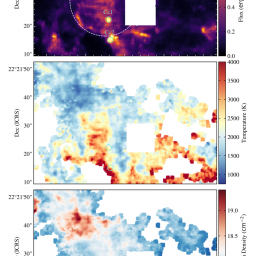Simulating dwarf galaxies with realistic ISM using RIGEL model
Yunwei Deng (Tsinhgua University)
Tuesday 15/10/2024 @ 14:00, Sala Antonio Sollima (IV piano Battiferro)
I will introduce our RIGEL simulation model and present a suite of dwarf galaxy simulations in various galactic environments. The RIGEL model integrates detailed implementations of feedback from individual massive stars into the state-of-the-art radiation hydrodynamics code, areport. It forms individual massive stars from the multiphase ISM by sampling the IMF and tracks their evolution individually. The lifetimes, photon production rates, mass loss rates, and wind velocities of these stars are determined by their initial masses and metallicities based on a library that incorporates a variety of stellar models. The thermochemisrty model tracks the non-equilibrium H, He chemistry as well as the equilibrium abundance of CI, CII, O I, OII, and CO in the irradiated ISM to capture the thermodynamics of all ISM. We evaluate the performance of our model using 1 M? resolution simulations of a isolated dwarf galaxies. We found that the star formation rate (SFR) and interstellar radiation field (ISRF) are proportional to the metallicity of the galaxy. Photoionization and photoheating can reduce the SFR by an order of magnitude by removing the available cold-dense gas fuel for star formation. The presence of ISRF also significantly changes the thermal structure of the ISM. Radiative feedback occurs immediately after the birth of massive stars and rapidly disperses the molecular clouds within 1 Myr. As a consequence, radiative feedback reduces the age spread of star clusters to less than 2 Myr, prohibits the formation of massive star clusters, and shapes the cluster initial mass function to a steep power-law form with a slope of ~2. We also use RIGEL model to explore the galactic outflow, star cluster formation, star formation efficiency regulation in various various galactic environments including isolated or interacting dwarf galaxies and the lowest-mass halos in THESAN-ZOOM project.

